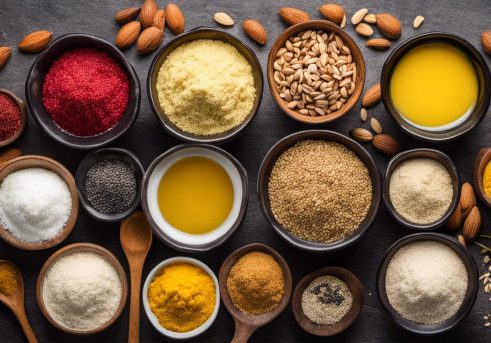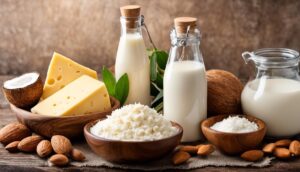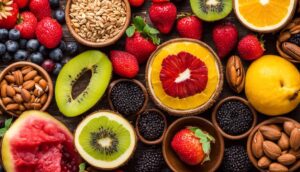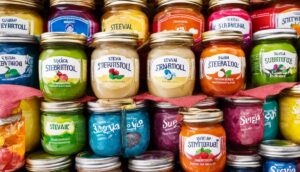The world of gluten-free cooking can, at times, feel limiting and daunting for many. However, when you understand the alternatives at your disposal and learn how to manipulate them to mirror their gluten-filled counterparts, a whole new culinary landscape unfolds. This exploration will delve into the different gluten-free ingredients such as almond flour, coconut flour, and quinoa, along with their unique characteristics, nutritional values, and incorporation methods. We will also tackle the nuances of adapting regular recipes to be gluten-free, focusing on the significance of ratios, texture, and taste. Finally, we will navigate through the art of gluten-free baking, which requires unique preparation and cooking techniques, to unearth the secrets to managing gluten-free doughs and achieving the perfect texture in your baked goods.
Understanding Gluten-Free Ingredients
Revel in the Bounty of Gluten-Free Goodness: Exploring Common and Unique Ingredients
For anyone committed to the gluten-free journey, there’s a world of delicious variety just waiting to be explored. Whether you’re a seasoned gluten-free gourmet seeking the next exciting ingredient to spice up your culinary creations, or someone considering embarking on the gluten-free adventure, the panorama of common and unique gluten-free ingredients is both vast and enticing, echoing the diversity, creativity, and flexibility that is central to a foodie’s world.
Gluten-free is not synonymous with flavor-free. Instead, this path offers an opportunity to discover the incredible array of gluten-free ingredients that translate into mouthwatering dishes.
So, let’s just jump right into it, exploring the diversity and versatility of gluten-free ingredients.
In the realm of grains and starches, the gluten-free landscape is indeed rich. With proven staples such as cornmeal, quinoa, and rice, the meal planning possibilities are endless. Quinoa, in particular, can be used in salads or even as a base for a heart-healthy breakfast porridge, while cornmeal creates scrumptious polenta or cornbread.
Additionally, exciting alternatives like amaranth, buckwheat, millet, and teff, each boasting flavors and textures that are unique in their rights, offer culinary creatives the exotic nuances to play with. Teff, the mighty tiny grain, with its mild-nutty flavor, serves as a perfect thickening agent for soups and stews, while millet, provides a light, fluffy texture, perfect for fluffy pilaf or hearty stirred into veggie burgers.
Starches like arrowroot, tapioca, and potato starch serve as brilliant binding agents, emulsifying ingredients beautifully in baking and cooking.
In the realm of flours, almond and coconut flours lead the gluten-free charge, providing excellent bases for pastries, muffins, or even pancakes. These flours lend a distinctive flavor, enhancing the overall taste of the dishes they contribute to.
For a unique twist, explore the world of bean flours. Chickpea flour (or gram flour) is a versatile player in the cooking world, from making divine falafel to creamy hummus or even as a thickening agent in curries.
Certainly not to be overlooked, gluten-free oats have firmly stamped their mark in the gluten-free universe, starring in breakfast bowls, granola bars, overnight oats, and even savory oat risottos.
In the expedition for gluten-free ingredients, spices play an essential role, adding fabulous flavors to every dish. From cumin to garam masala, the aromatic world of gluten-free spices is an endless exploration, each adding layers of flavor to gluten-free meals.
Where would one be without the versatile nuts and seeds? Chia seeds, flaxseeds, pumpkin seeds, almonds, and pistachios are all gluten-free powerhouses, packing a punch in smoothies, salads, or even as handy snack options.
Finally, fruits, vegetables, meat, dairy products, eggs, and most beverages are all naturally gluten-free, inviting a cornucopia of fresh and wholesome ingredients into the gluten-free world.
Every ingredient is a ticket to a new culinary experience, a new flavor to discover, a new texture to appreciate. The gluten-free kitchen is not one of limitation, but one of versatility and innovation. Embrace the charm of unique and common gluten-free ingredients and let the adventure begin!
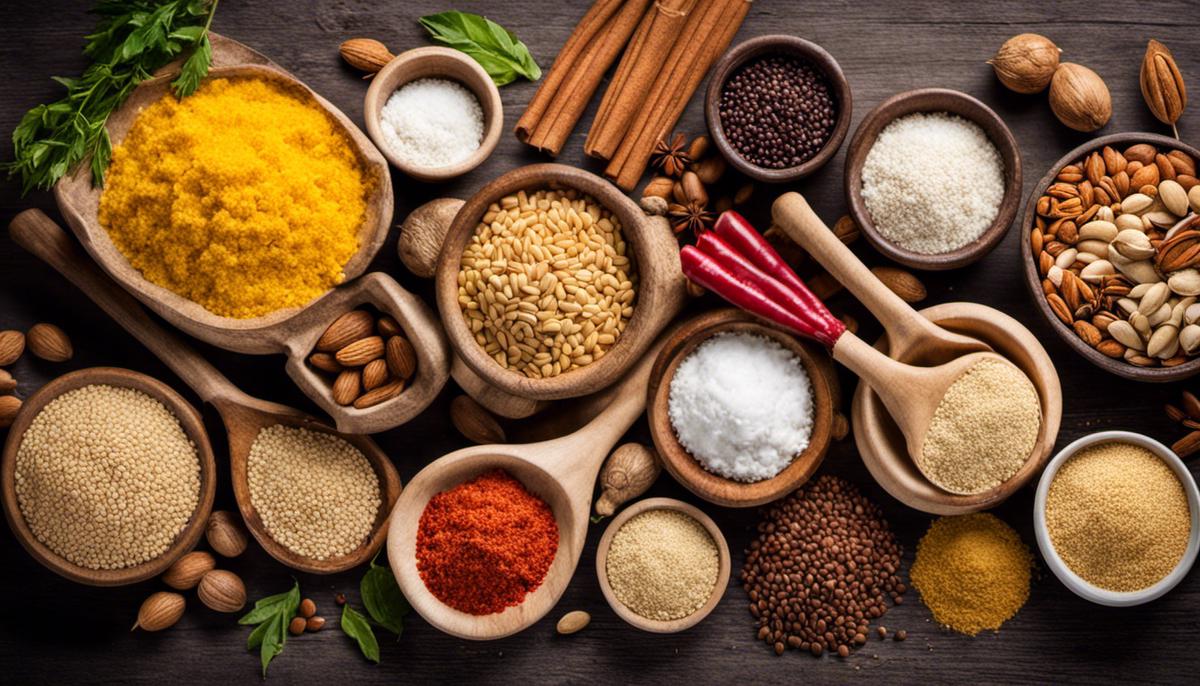
Adapting Regular Recipes to Gluten-Free
Turning Everyday Recipes into Gluten-free Gastronomic Delights
If the idea of baking gluten-free sends a spiral of confusion, fear not! Every culinary enthusiast knows experimenting in the kitchen is part of the joy of cooking. Just serve your creativity on a plate – gluten-free style! The challenge is interesting, and the results can be absolutely delicious. Transforming your beloved regular recipes into gluten-free surprises is not as daunting as it may seem, you only need to embrace some new principles and ingredients.
So, having understood the gluten-free basics mentioned earlier, let’s explore some more culinary tricks, shall we?
First and foremost, mastering the art of substitutions is crucial. Gluten acts as a binder, giving structure to baked goods. It helps create that satisfying chew and allows leavened baked goods to rise. Without it, you need a worthy stand-in. Enter, the role of gums such as xanthan and guar. These substances mimic gluten’s structural properties. Start off small, using about a quarter to half a teaspoon per cup of flour.
Further, fascinating ingredients like psyllium husk powder also play a structural role in your gluten-free delights. Psyllium husk powder is a dietary fiber that’s extremely absorbent, making it a fantastic binder in gluten-free baking. It’s often used in bread recipes, creating a bread that’s soft and pliable, not crumbly.
Remember, gluten-free doesn’t mean skipping oats. Just go for the gluten-free labeled version since regular ones could be cross-contaminated with gluten. These precious grains can be ground into flour, used for breakfast or snacks, as a binder, and even in desserts!
When it comes to baking, remember not all gluten-free flours are created equal. A blend of different flours works best. Use a mix of almond flour, rice flour, and tapioca starch for that perfect, tender crumb. The almond flour adds a bit of flavor, the rice flour gives it a good structure, and the tapioca makes it chewy.
Now, let’s not forget about the vibrant world of herbs, spices, and condiments that can enhance flavors and bring a dish to the next level. Fresh, pickled, or dried, they will not only increase the taste of your dish but also add a healthy punch. Remember, gluten-free soy sauce, tamari, and miso have the umami flavor that gives depth to a variety of dishes.
Moreover, gluten-free doesn’t mean you have to miss out on beautiful bread. Discover a new world of naturally gluten-free alternatives like corn tortillas, rice cakes, or crispbreads. They’re ready to feature in your meals, from breakfast to dinner.
Trickiest of all: gluten-free pasta. After many trials, a 50:50 blend of corn flour and rice flour seems to have the best result. Take note, the key to a well-textured gluten-free pasta is the added starch, such as potato or tapioca starch.
In the world of gluten-free cooking, there are few limits. Get ready to unlock a world of gastronomic adventures. Embrace this exciting transition and keep innovating. As in all culinary pursuits, patience and practice will make the master.

Gluten-Free Baking Techniques
Now, let’s delve deeper into the art of gluten-free baking by exploring certain techniques that might differ. First off, when it comes to working with gluten-free doughs, hydration becomes a crucial aspect of the baking process. As gluten-free flours and starches tend to have a more absorbent quality, the requirement for liquid should be a little greater than in a glutinous recipe. Eggs are often suggested as a good source of moisture, protein and they also act as binders. However, it’s crucial to be mindful as too much could result in a more custardy texture.
Next, let’s talk leavening. Gluten-free goods can be denser than their gluten cousins, and that’s where baking powder, baking soda, eggs, and yeast, come into play. By incorporating these leavening agents, it results in a lighter, fluffier product. Some gluten-free flours naturally leaven more than others, like buckwheat and oat flours, so take note of these factors when experimenting with your blends.
Paying special attention to mixing is another critical factor in gluten-free baking. Develop the knack of finding the perfect equilibrium between under and over-mixing. With gluten-based recipes, over-mixing can result in a tougher texture due to the development of gluten strands. Gluten-free doughs benefit from thorough mixing which aids in the binding process and improves the texture. However, overdoing it could result in the batter becoming too stiff. So, like the culinary maestros we’re all striving to be, it’s all about finding that harmony.
One more thing to bear in mind is the baking temperature. Typically, gluten-free foods may require a slightly lower temperature to prevent a hurried rise and subsequent fall during baking. Start by reducing the temperature by 25°F from the original recipe and adjust based on the results.
Turning our attention to the bread, to successfully bake a light and fluffy gluten-free loaf, an extra step is often advantageous. This involves creating a ‘sponge’, a mixture of flours, yeast, water, and sugar, which is left to ferment before the remaining ingredients are added in.
Gluten-free pastries can be tricky but not impossible! The main challenge lies in achieving that flaky, crisp texture we all crave. A great tip is the use of a blend of gluten-free flour and very cold chunks of butter, incorporated into the dough with swift, gentle pressure, followed by careful folding.
Lasty, always remember that gluten-free baking is not about recreating the same flavors and textures of gluten-rich foods, but rather discovering a world of new ones. Keep an open mind, a playful spirit, and there’s no doubt, you’ll discover some delicious gems along the journey. The joy of gluten-free baking lies in the exploration and who knows, you might just discover your new favorite recipe lurking in a combination you’d least expect!
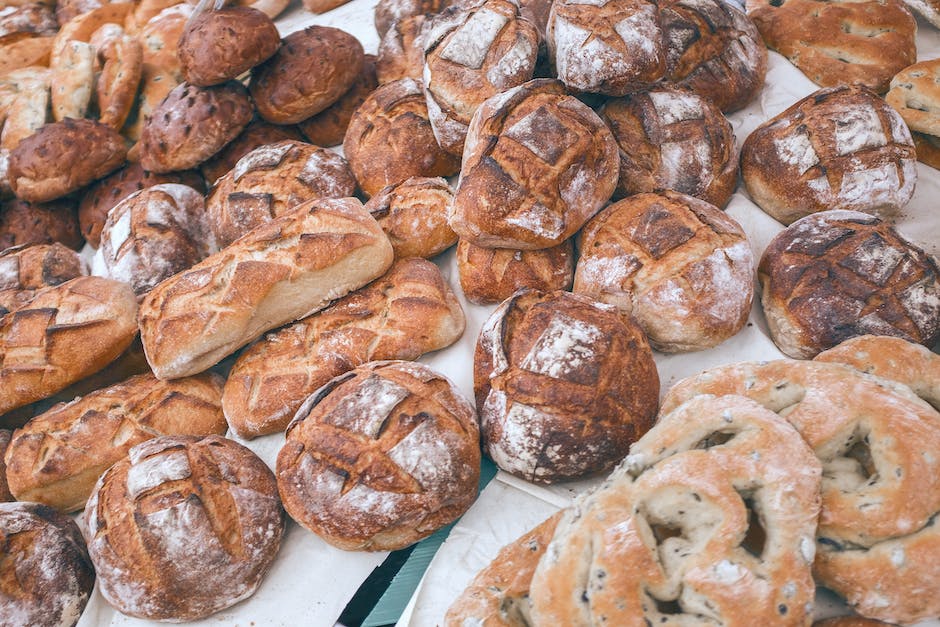
The journey into gluten-free cooking and baking brings its own set of challenges and joys. With knowledge and practice, the usage of gluten-free ingredients like almond flour, coconut flour, and quinoa can become second nature in your kitchen. The ability to convert your favorite traditional recipes into gluten-free variations can expand your culinary horizon while taking care of your health needs. Mastering the science and art behind gluten-free baking methods is another feather in your cap as a home cook or professional chef. Ultimately, it seizes the limitations posed by a gluten-free diet and transforms them into an opportunity for gastronomic creativity and enjoyment.


